#carlsbad caverns np
Photo

Carlsbad national Park
6 notes
·
View notes
Text

Collared Lizard (Crotaphytus collaris), males, family Crotaphytidae, Carlsbad Caverns National Park, NM, USA
photograph by Paul Ferrel | NPS
394 notes
·
View notes
Text
So I know there are over 430 sites in the National Parks System but only 63 official National Parks. The rest have designations like National Monuments, National Historic Sites, and all that jazz. But sometimes you hear about one of these lesser parks jumping up the ranks to become a National Park.
Now, I know a lot of bureaucracy goes into determining the qualifications for these categories, but a little fantasy makes life on this cold unfeeling space rock more bearable, so I like to imagine these promotions happen because the landscape just… got cooler.
Picture a young park ranger making his rounds at Chattahoochee National Forest, making sure there are no fires or anything, when he steps into a familiar clearing and freezes in place. He takes off his sunglasses and stares like Sam Neill in Jurassic Park. A 4-mile long, 5,000 foot deep canyon has opened up overnight. “Well, that’s gonna mess with the Ruby Falls trail,” he whispers.
That evening when he gets back to his cabin, he hops on his Park Ranger group chat, ready to share the good news. Turns out his friend Steve in Arizona got there first.
“New waterfall just dropped.”
“What?”
“Yeah, there’s a huge waterfall in the middle of the Sonoran Desert.”
“That should definitely promote it from lame National Monument status, right?”
“I don’t know, did you hear about the Ohio redwood?”
“Is that just what it sounds like?”
“Yeah, a 300 foot redwood tree grew in the backyard of the James A. Garfield National Historic Site and they didn’t upgrade that one.”
“Okay, but historic parks don’t really have that upward mobility, Steve. Like, it’s not gonna get more historic.”
“A giant redwood in Ohio is pretty historic! I heard it’s all politics. They already made Cuyahoga Valley a National Park and they’re not gonna do another Ohio one so soon.”
The ranger vaguely remembers another interesting story that had been rumbling around the group chat. “Becca, how are those crystals coming along?”
A few months before, his colleague Becca had been giving a tour at Blanchard Springs Caverns in Ozark National Forest when she stumbled upon a hither-to unseen chamber in the caverns filled with hundreds of iridescent flower-shaped crystals that gently sang in four-part harmony when water dripped onto them.
“Oh yeah, some higher-ups from NPS came by and took some notes, but they said keep an eye on the crystals and let them know if they multiply into the thousands or if we identify any incidents of missing body parts regrowing after rubbing one of the crystals.”
“That seems like overly harsh criteria.”
“That’s what I said. Apparently Carlsbad Caverns has one that can regrow kidneys. But only kidneys for some reason.”
“That’s weird. New River Gorge became a National Park and it’s way less cool than your crystals.”
“It’s my understanding there were some classified elements at play.”
The young ranger leans back and takes a deep pull from his Gatorade. He knows what “classified” means for the NPS. Those darn sasquatches.
18 notes
·
View notes
Text

Kangaroo rats are not only cute, but they are also very well adapted to the desert.
They have legs that resemble a kangaroo and can jump up to 8 ft in a single bound. This helps them escape predators like coyotes, owls, snakes, and kit foxes. They also use those well-adapted legs to kick dirt into their predators' eyes before fleeing to their burrows' safety.
They stuff the entrance to these burrows with sand during the day. This keeps it nice and cold inside. They’re nocturnal, meaning they sleep during the day and are active at night, which also helps keep them cool in the hot summers. They often nest in shrubs, so they don’t need to go far for their nightly meals of seeds.
They usually stuff pouches in their mouths and return to their burrows to store them. If necessary, they can eat insects or other vegetation. They also don’t need to worry about finding water as their super-efficient kidneys and specialized nostrils are specially adapted to the point where they rarely ever need water.
These amazing rats get along fine without humans, but sometimes humans build roads, houses or buildings near their homes. So next time you think rats are a pest, remember that maybe to kangaroo rats, the humans are the pests.
NPS Photo
via: Carlsbad Caverns National Park
29 notes
·
View notes
Text
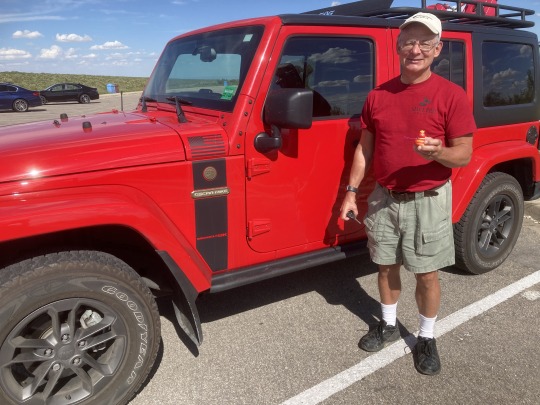
Jeeping and getting Ducked again. This time at Carlsbad Caverns NP
7 notes
·
View notes
Photo

The Witch's Finger in Carlsbad Cavern NP, New Mexico
Step into a world of enchantment at The Witch's Finger in Carlsbad Cavern NP, New Mexico. Let the breathtaking beauty of this natural wonder ignite your imagination and leave you in awe of Mother Nature's creations.
0 notes
Text
The Witch's Finger in Carlsbad Cavern NP, New Mexico

Witness the spellbinding allure of The Witch's Finger in Carlsbad Cavern NP, New Mexico. Immerse yourself in the magic of nature's marvels and discover the secrets hidden within.
0 notes
Text
carlsbad caverns
I've wanted to jot down my experience at carlsbad caverns but have been so busy that i never got the chance. I actually need to head out asap since i'm supposed to be leaving now to spend the weekend in the stanislaus national forest. but since im about to take another trip into nature i HAVE to very quickly finish up jotting down my previous experience before i set out on this next one.
there's always a thrill when descending underground into caves. i much prefer exploring unpaved caves but the magic of carlsbad caverns was the size of it. so spectacular to know how large of a world exists underground there.
the evening that i was waiting for the bats (mostly Brazilian free-tailed bats) to fly out of the cave, it was a record late time for that year up until that point. we were waiting and waiting and waiting and worried that maybe the bats would decide not to leave the cave that evening. i was really savoring the fact that they prohibited all electronics to protect the bats--it also protected my happiness and appreciation of that experience. we were all fully present, together, waiting patiently under a darkening sky and cooling temperatures to witness the bats. my eyes struggled to adjust to the darkness and i sat there too chilly in my shorts as the wind swept around me. nothing to distract me from being in tune with my senses and taking it all in.
finally, i spotted a single bat in the sky above my head, and then i started doubting myself and convinced myself it was just a bird, and then slowly and eventually more bats came out until it was undeniable -- the bat flight had started! i told myself then and there that it was one of the most awesome things i had ever experienced. but i also find bats to be one of the most fascinating mammals. the vast number of bats that flew out of the cave boggled the mind, and the path that they took in the air as they flew out was enchanting. it's so difficult to believe that there are way more bats later in the year than when i went, because there already were way more bats than i had expected when i was walking through the caverns.
ultimately, to be disconnected from the rest of the world while i sat outside there silently watching an endless stream of bats fly out of the cave to go hunting is a memory i deeply treasure. we share this planet with absolutely beautiful living creatures.
also, great job to carlsbad caverns: the nearest bathroom to the bat amphitheater at carlsbad caverns that evening after the bat flight takes the cake for nicest, cleanest bathroom ive ever visited at any national park. although to be fair, most public bathrooms at nps visitor centers are clean anyway.
my other favorite thing was watching a majestic turkey vulture gliding air currents very close to me for the longest time so i got a wonderful view of the bird and got to watch the bird up close for a while.
departing for the sierra nevadas today. i really want to disconnect from the world and be fully present and surrounded by wilderness again.
0 notes
Photo
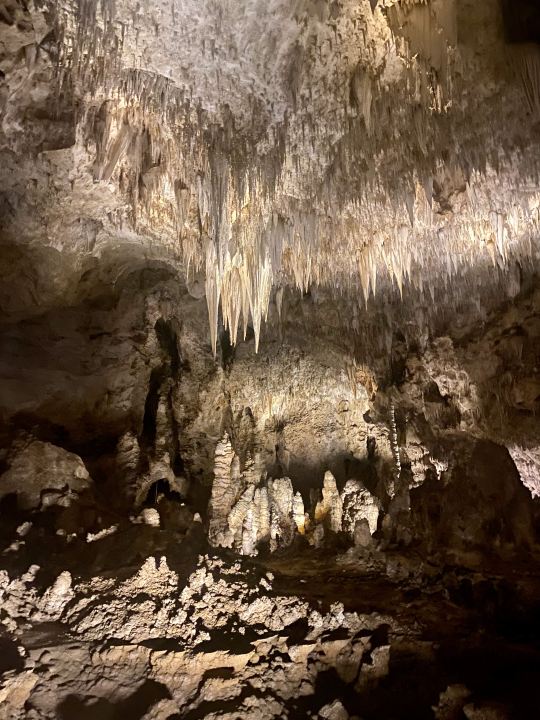
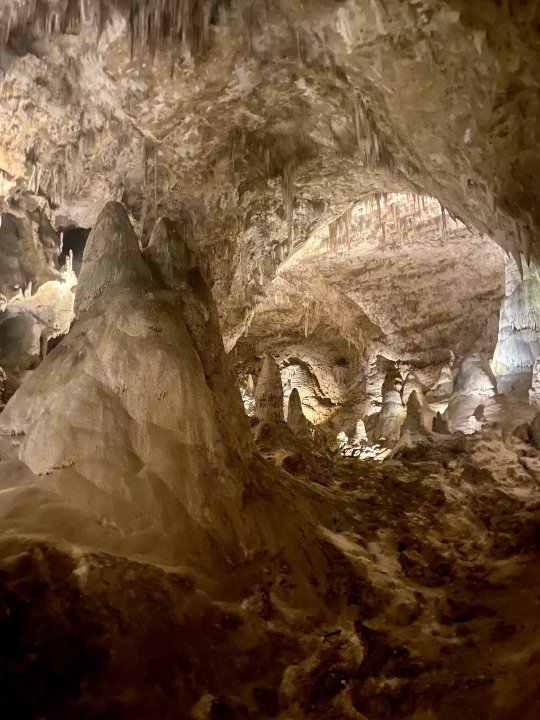
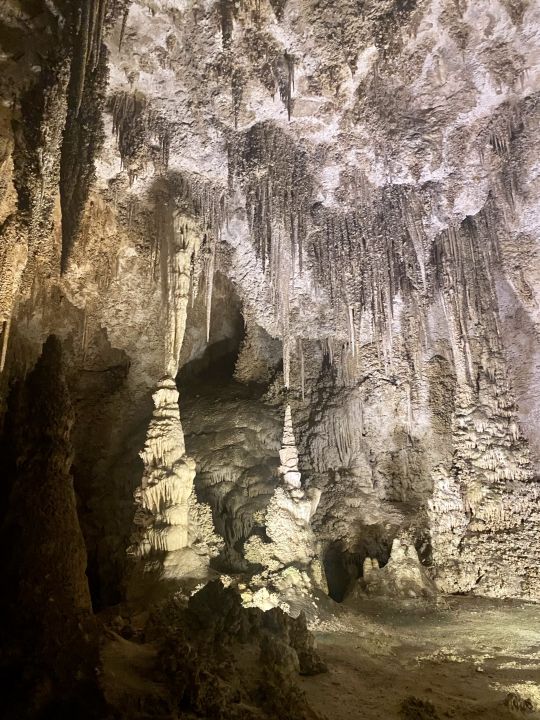
carlsbad caverns national park, new mexico
#carlsbad caverns national park#carlsbad caverns np#carlsbad caverns#new mexico#national park#hiking#nature#rock formation#caverns#caves#underground#my photos#crosscountry2022
7 notes
·
View notes
Photo

Middle Slaughter Canyon Trail, Carlsbad Caverns National Park, New Mexico
#hiking#trail#footpath#hiking trail#middle slaughter canyon trail#carlsbad caverns national park#carlsbad caverns np#new mexico#nm#new mexico hiking#nm hiking#new mexico trails#nm trails#new mexico outdoors#nm outdoors
1 note
·
View note
Video
youtube
Carlsbad Caverns National Park – New Mexico | Beautiful America Series –...
#carlsbad caverns national park#Carlsbad Caverns NP#carlsbad caverns#Carlsbad Caverns Visitor Center#big room#Carlsbad Cave#new mexico#National Park Carlsbad Caverns
0 notes
Photo
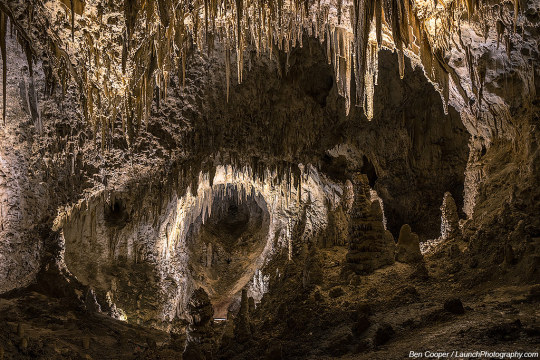
The eye of hell by Ben_Cooper https://flic.kr/p/R3Ucvo
532 notes
·
View notes
Text

Collared Lizard (Crotaphytus collaris), Carlsbad Caverns National Park, NM, USA
These lizards can run up to 15 mph (24 kph).
photograph by NPS/A. Mazzucco
17 notes
·
View notes
Text










So many fossils from Guadalupe Mountains National Park. Check out the Permian Reef Geology Trail. If you have several days you can hike it all the way to Carlsbad.
#science#science rules#texas#Permian#nps#guadalupe mountains national park#Guadalupe Mountains#carlsbad caverns#trace fossil#fossilfriday
57 notes
·
View notes
Text
Continuing to Explore the American Southwest
The last few weeks have been full of temperature appreciation exercises, seeing how a meteor crashing into the Earth can impact it tens of thousands of years later, philosophizing about the Roswell UFO happening around the same time nuclear bombs and other nuclear weapons were being tested, as well as some of the most visually stimulating natural sights available.
Meteor Crater is where a meteorite 150 feet across crashed into the desert approximately 60,000 years ago. The crater it made is over 4,000 feet across and 2.4 miles in circumference. In order for a meteor to blast a hole this wide and 60 stories deep, its high velocity was clearly one of the major factors. On a really cold and windy the day we took a tour around the rim of this crater in the middle of the desert and that seemed to add to the rawness of its appearance. They told us Meteor Crater is the first proven and best preserved impact site on Earth. Thinking about collisions ranging in size from microscopic to catastrophic events that have occurred since the beginning of the solar system, and will continue to occur, is a lot more humbling than thinking about what to have for dinner.
We felt we needed some more natural beauty so after we drove through Cholla National Monument which is stunning, we spent time in the Arizona Petrified Forest. Talk about history! Lets go back about 225 million years to the Triassic Period when this area was a prehistoric rain forest. The remnants of the prehistoric forests, now petrified wood, fossils and artifacts was amazing to walk through and try to fathom how long ago the beautiful petrified, crystalized wood existed as a living organism. We visited the Painted Desert, an area of erosion through colorful layers of ancient sediment. In the Arizona/New Mexico border area the elevation was a bit high, on the order of 5000 feet, and we were almost always bundled up due to the chilly temperatures. We did enjoy some warm sunny days but most evenings we had to disconnect the water hose so it wouldn’t freeze. We even bought an electric space heater to go along with our internal propane heat to ensure we wouldn’t freeze.
On a day we thought was relatively nice weather wise we decided to drive to Canyon de Chelly. These canyons have had people living in them for nearly 5000 years that were mostly Navajo and other American Indians. A horrible stain on American history occurred in the 1860s when the US Army claimed present day Arizona and New Mexico as US territory. There was a peace agreement proposed with the Navajo, but for the next 17 years the conflict continued. There was then a brutal campaign against the Navajo (led by Kit Carson) where they were pushed toward the canyon mouth and most were captured or killed. Their homes and remaining livestock were destroyed and it wasn’t until the late 1860s the Navajo were allowed to return home to rebuild their lives. As we approached the various viewpoints to take photos it started to snow and we had to walk carefully along the pathways that were already iced and snowy from previous days. It is incredibly beautiful and somehow the snow made it more of an adventure while we pondered the beauty and the harsh history. The next morning we woke up to 2 inches of snow and had to laugh since we kept saying we wanted to be someplace warmer but didn’t seem able to get there.
Next was Albuquerque where we spent several hours in the National Museum of Nuclear Science and History. We learned about the history leading up to the creation and use of the atomic bomb and the countries that became involved. We saw the bomb casings of the famous atomic bombs that were dropped on Hiroshima and Nagasaki and saw a chilling film about the makings of the bombs, the timing and the dropping of them. There was lot on how they effected history as well as nuclear medicine and how it contributed to the advancement of medical technology. My head was spinning as I tried to process it all and I am still unsettled when I think about it. White Sands was next and exactly what we needed. The white sand dunes seemed to shimmer in the lovely warm sun and we so enjoyed that we escaped the snow to go to a place that looked like it had a lot of snow but was really the largest gypsum dune field in the world. This area again goes back millions of years when the Permian Sea retreated and left deep layers of gypsum. Mountains rose and carried the gypsum high and later water from melting glaciers dissolved the mineral and returned it to the basin. We walked on a trail through the dunes and the sand was surprisingly firm in most spots and finer than sugar. John of course took credit for the beautiful weather and said as my Tour Guide he had specially arranged it as part of my temperature appreciation exercises. I’ll go along with that.
We definitely wanted to go to the UFO Museum in Roswell, NM and found that to be quite thought provoking and entertaining. Of course it led to many discussions on what we thought and believed really happened, but what we found most intriguing was how the timing of it occurred during the same time as all of the Nuclear testing and relatively close to the same geographic area. The last stop in New Mexico for now was Carlsbad Caverns. We have both been in a lot of caves throughout the World and one thing I did really like about Carlsbad was the natural color lighting. There were no colored lights and you got much more of a feel of what it really looked like and definitely a more cave like feeling with minimal and strategically placed lighting. It is magnificent and was especially nice because there were very few people there so we could stop and take as many photos as we liked. Funny thing is that it was actually warmer down there (80 stories below) than it was on the surface, but I was still glad to reemerge into the daylight after being down there a couple of hours. We feel a bit overwhelmed with the natural beauty of the Southwest and concerned that we’re becoming desensitized so next we’ll spend some time in cities and visit old friends.
For all the photos see John and Charlotte’s flickr sites. Just click on either of our names.
#World tour#Arizona#New Mexico#Carlsbad Caverns National Park#NP#Painted Desert National Park#Petrified forest national park#National museum of nuclear science#atomic bomb#Meteor Crater National Park#Roswell#UFO museum#Canyon de Chelly#stain#American indians#Navajo#Kit Carson#gypsum#White Sands National Park#space heater#electric
1 note
·
View note
Photo

Peek-a-boo! Can you spot the deer at Carlsbad Caverns National Park in New Mexico? Best known for its fantastic cave system, the park also boasts above ground wonders like rocky canyons, a cactus-covered desert and wonderful wildlife. Take your time and see it all. Photo by Charlie Reed, National Park Service.
#carlsbad caverns national park#carlsbad caverns#national park#national park service#nps#find your park#findyourpark#usinterior#new mexico#southwest#nature#nature photography#wildlife#wildlife photography#deer#desert#winter#winter ❄️#winter wonderland#animal#cute animals#outdoors#america's great outdoors#amazing#awesome experience
1K notes
·
View notes